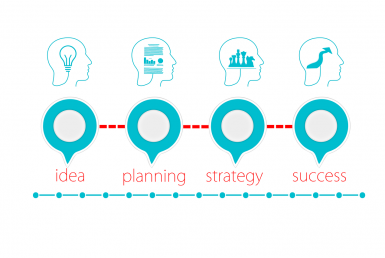Insurance Agency Marketing? – (Increase your Online Reach)

Insurance Agency Marketing and Online Reach? – The topic of digital marketing and advertising is what makes your agency phones ring and inbox fill with online leads, and the main life line for many business owners.
A whole digital marketing and advertising program might not be on very top of your priority list since you are a brand-new insurance agency, but you should still consider some type of involvement and investment.
Agency Advertisement and Marketing? – How to Get Involved?
The first thing you will need is a great online business website. Yes, you knew this already, but we cannot express the importance of starting this project sooner than later. This is because, building like with anything, takes time to develop and grow into the numbers of leads you want.
This process of obtaining organic website traffic comes from many consistent hours of governing all online marketing strategies.
Some of these business marketing strategies include:
• SEO – Search Engine Optimization
• Digital Media
• Local Listings
• Social Media Campaigns
• Content Creation
• Offsite Marketing

Heart of your Business? – Insurance Agency Business Website
Yes, your website will be the heart of your advertising and marketing efforts, whether that’s offline or online. Clients may need somewhere to go for advice such as how to submit a claim or make a payment.
Additionally, the sooner you secure your domain, the earlier your site starts building authority together with all the search engines.
This will become significant once you’re prepared to begin that complete digital marketing and advertising program.
Computers/Tablets In 2018?
Computers are a clear technology requirement. However, an intuitive Windows-based tablet may be a better choice than a desktop computer or notebook for your new agency. Why?
Tablets are mobile and lighter compared to notebooks so that it’s quite simple to operate from wherever, whenever. A great tablet computer is often as strong as a desktop computer. And, using a docking station, you are in a position to work at work as though you had a desktop computer.
Whether you receive a tablet or background computer, get several screens for every work station. They assist with productivity and will make procedures simpler like getting your management system on a single screen and your relative rater on the opposite.
VOIP – Agency Telecommunications?
Add VoIP to your agency’s telephones, do not use a landline. Why?
With VoIP you’re able to make calls using the world wide web rather than the older, analog telephone lines.
There are several advantages to using VoIP over the more traditional land line telephone use. For example, long-distance calls are more economical and affordable overall.
How is this possible? Easy, you will have internet with service. That means, with VoIP you do not need to pay two invoices, one for telephone and one for net.
Besides, you will receive features included on your VoIP system which you may need to pay extra to get a landline. So, keep expense in mind when searching for the affordable telecommunication services.
Agency Advantages Continued
Another positive in buying this type of telecommunication service, is if you would like reports on the length of time your staff spends on the telephones or the number of calls they make at a time interval, a VoIP phone system can provide you that data.
As many business and non-business interactions require the use of the internet, the connection of online users becomes essential.
This is because, with the advent of technology use through the internet, many businesses are finding that building online connections are more valuable in most cases then the more traditional ways of marketing.
Examples of traditional marketing:
• Flyers – door hangers
• Tangible local directories, meaning the actual physical copies of directories, like yellow book.
• Mailers

Insurance Agency Online User Experience?
Online users are looking to make connections fast and that are dependable. This means, creating a reliable and secure ways to download and transmit information to your clients.
This will help to improve first impressions and create long lasting client impressions.
So, contemplate upload and download speeds in addition to a supplier’s uptime.
Scanner/Printer/Copier – Agency Tools?
While the entire world goes increasingly electronic, occasionally there’s still paper. Nonetheless, you do not need to maintain that hard copy, since technology can now take care of it for you.
How you ask? Great question, and that has to with technology that can copy and upload to your desktop or computer.
This happens in the form of a scanner. Your agency staff can scan insurance documents into your service management system, then shred and toss it out.
So, those old days of storing and filing paperwork in clients’ folders is out the door, and to many existing agencies satisfaction. Better yet if you buy a scanner which could also function as your agency’s printer and copier.
E-signature? – The technology of Marketing and Branding
Your aim as a brand-new insurance agency would be to eliminate as much friction against the insurance purchasing process as possible.
You want to make it simple to get a user to select you.
Employing e-signature eliminates that friction.
Agency Infrastructure – Turning Files into Info?
A large issue with the growth of contracts begins basically with how a contract is regarded as a contract. The data contained these contracts is crucial to defining the connections you discuss with your clients, partners, employees, and much more–and you want to get a simple method to decode each and every contract you register and what is inside.
The vital point to keep in mind about your trades, also, is that for nearly everyone the arrangements your company implements, you would like to monitor certain sentences, key words, provisions, and much more.
Tracking these kinds of items in documents such as contracts is a tough thing to do. Why? Most contracts which are implemented inside your company do not all look the same.
You can find changes, new variations, redlines, and more which reevaluate the way you centralize these contracts in a means that is simple to search and examine. Normally, this breaks as your coworkers will feel it is easiest to simply send a record and utilize that record to monitor the changes inside it.
Then, once the contract must be implemented, the record is going to be flattened to a non-editable PDF that is digitally or digitally signed. Where does this leave the contract supervisor hoping to know the contents of the contract later?
Key Points with Digital Contracts
Normally, it takes them to re-read the finalized, implemented contract and put the significant provisions or modifications to a spreadsheet which appears something like this:
Spreadsheets seem crude to a great deal of individuals.
If you are monitoring contracts this manner, however, you are still ahead of all. Imagine how this recorder would seem in your own business:
Highlighting key terms in your contracts so it’s possible to distinguish the way client, vendor, or employee relationships are described.
- Would you understand what is in your contracts?
- Can you monitor when contracts are legal through?
A number of these data points could be monitored in Excel, a contract lifecycle management system, along with other tools however most businesses don’t possess a true record (out of an executed contract) of what was really agreed to.
Spreadsheets become hard to handle, contract lifecycle management tools get unwieldy to embrace, and your significant customer connection definitions might get lost.
The outcome?
Your client becomes upset because your business is not matching or surpassing their expectations. Worse–you can eliminate an eye on a significant legal provision which ends up costing you a great deal of cash in the future.
The data within your contracts has to be simple for the ideal folks in your business to uncover and discover. Starting to centralize all this information starts with considering the info within your contracts since information which has both outputs and inputs.
The majority of contracts (80 percent or more in many B2B or B2C companies) are a standardized, non-negotiated (or gently negotiated) arrangement and hence the chance to produce these types of contracts more info is enormous.
B2C – Business Arrangement?
In B2C, you’ve got online stipulations, scalable arrangements which might be implemented as a click wrap, vendor/supplier arrangements, etc.
The only methods by which these kinds of contracts differ relies upon the inputs into the arrangement:
- Company name
- email address
- quantity
- begin date
- end date
and a couple of provisions which may be unique for every contract.

Business Implementation
These kinds of contracts are generally incorporated into company processes that assist scale and automate the outputs of their arrangement which need some action from the company:
- onboarding,
- invoicing,
- installation,
- kickoff calls
The results are what really occurs because of the contract being implemented. Most businesses do not connect the real implementation of a contract (i.e. the action of this contract being implemented) into the activities which immediately follow.
Traditional Document Implementation?
Ordinarily, a document is signed, then the individual who owns that record (the one person who knows what the contract claims) will reach out about next actions. Some organizations manage CRM to induce workflows that incorporate to internal or third-party systems to choose another action.
The increasingly more tech takes over our lives in each aspect, the more effective your company will have to be as you race to improve your competitors.
Customer experience is just one of the primary differentiators left on the planet–as well as your company develops, technology is the thing that helps you scale your client encounter.
For contracts, your organization can utilize technology to examine important manual procedures on your contracting experience which could be:
1) automatic and
2) optimized.
As an instance: If you must have contracts signed for modifications in among your contracts, how could you construct or incorporate into a portal site where your workers or clients already go?
Could you use placeholders in standardized arrangements for matters that may be unique to each signer, and populate these areas so they are stored and simple to search?
Could you post a NDA online (one of the biggest use cases for standardizes arrangements) to send to individuals for implementation rather than printing out and signing, with implementation integrating back to your own CRM?
Internal System Communication?
Imagine if the arrangement could “speak” to your internal systems? The information within the contract may connect into the core business processes that surround what occurs next.
Additionally, it sends an automatic email to the ideal people to inform them that the contract is finished. It provides a calendar invitation for the renewal supervisor to be certain they check in close to the conclusion of the contract’s duration.
This is actually the power of handling contracts as information. Contain the inputs, join in real time to the outputs.

Take Action, Now!
Getting started is simple: Take 30-60 minutes considering your standardized contracts inside your agency, and consider answers to these questions:
- Just how are those generally executed today?
- Where is the ideal location for these to be implemented (within a program, at a portal site, electronically onto a telephone, etc)?
- How are these inputs populated at a contract?
- Can there be an existing technology or procedure that helps with this? Does the legal staff have visibility into this?
- What about other groups that may require access to the vital pieces of a contract pertinent to these (Operations? Support?)




